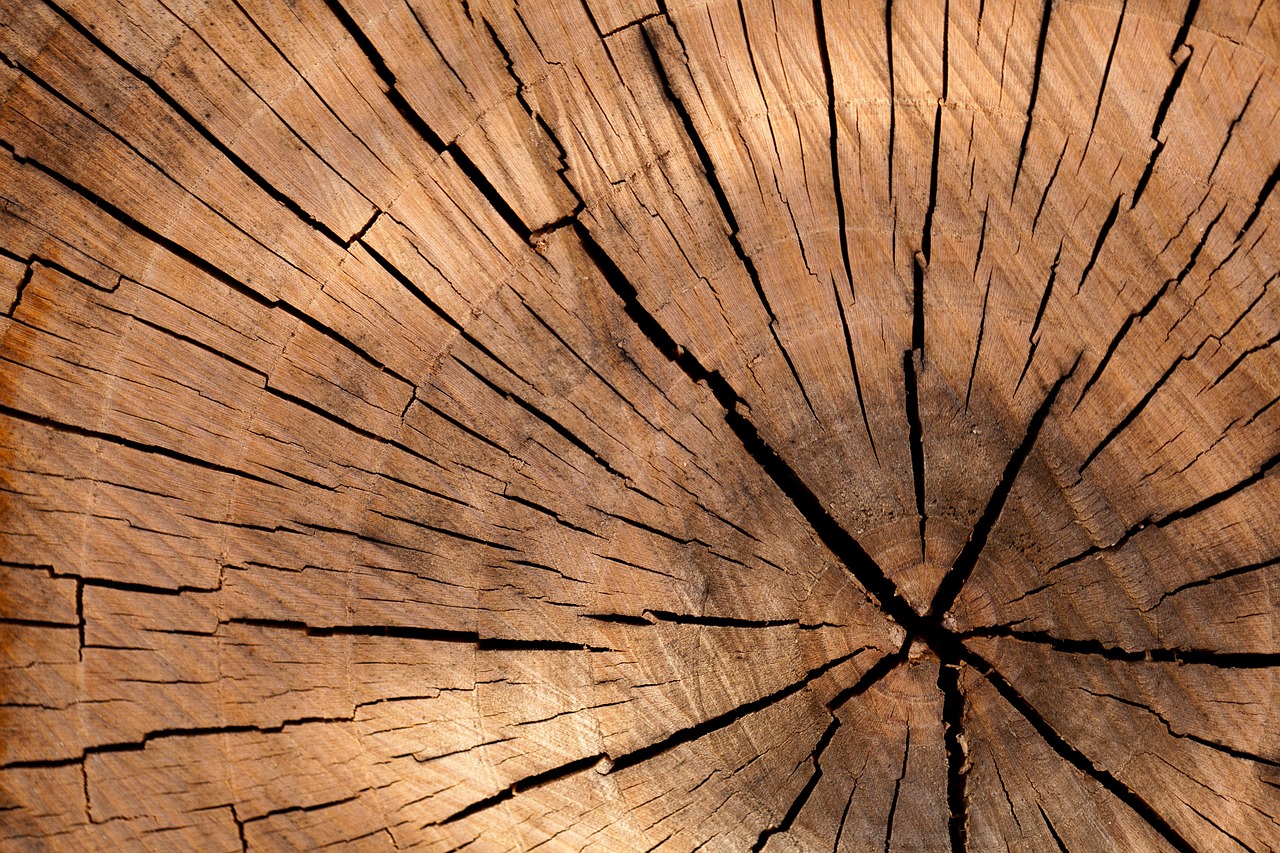The Guamuchil tree, known scientifically as Pithecellobium dulce, typically exhibits a moderate to fast growth rate even in drought-prone regions. Under optimal conditions, it can grow up to 3 feet annually, making it a suitable choice for arid environments.
The Guamuchil tree thrives in various climates, particularly in areas that experience dry spells and limited water availability. Originally native to Central America and parts of Mexico, this tree has adapted well to harsh conditions. Its resilience is one reason it has gained popularity in reforestation and landscaping projects in arid regions.

This tree is often recognized for its beautiful foliage and fragrant flowers. The Guamuchil tree plays a vital role in its ecosystem by providing shade and food for wildlife. Its pods are edible and serve as a food source for both animals and humans. Additionally, the tree’s deep root system allows it to access moisture from deeper soil layers, making it well-suited for drought conditions.
Growth Characteristics of the Guamuchil Tree
The growth characteristics of the Guamuchil tree are influenced by several factors, including soil quality, climate, and water availability. Understanding these factors can help in observing how well the tree can thrive in drought-prone areas.
In general, the Guamuchil tree displays the following growth traits:

- Height: The tree can reach heights of up to 30 feet.
- Canopy Width: Its canopy can spread 15 to 25 feet wide.
- Growth Rate: It grows approximately 2 to 3 feet per year in favorable conditions.
- Life Span: The average life span of a Guamuchil tree ranges from 20 to 50 years.
When considering planting Guamuchil trees in drought-prone regions, it is essential to choose the right planting site. Proper site selection can significantly affect the tree’s growth rate and longevity. Factors such as sunlight exposure, soil drainage, and competition from other plants should be assessed.
Soil quality also plays a crucial role in the growth rate of the Guamuchil tree. While it can tolerate poor soil conditions, providing good drainage and organic matter can enhance its growth. Amending the soil with compost or other organic materials can improve water retention during dry spells.
Water Requirements
The Guamuchil tree is remarkably drought-tolerant. However, during its early growth stages, adequate watering is essential. Young trees require regular watering until their roots establish deeply. Once established, they can survive with minimal water.

The following table summarizes the water requirements for Guamuchil trees at different growth stages:
| Growth Stage | Water Requirement | Frequency of Watering |
|---|---|---|
| Seedling | High | Weekly |
| Young Tree | Moderate | Every 2 weeks |
| Mature Tree | Low | Monthly or as needed |
In addition to its water needs, the Guamuchil tree’s ability to adapt to varying moisture levels makes it an excellent candidate for xeriscaping. This landscaping approach emphasizes water conservation and utilizes drought-resistant plants, making it ideal for regions with limited rainfall.
Furthermore, the Guamuchil tree’s ability to fix nitrogen in the soil enhances its growth rate and that of neighboring plants. This symbiotic relationship benefits agricultural practices in arid areas, improving soil fertility and overall ecosystem health.

The overall adaptability of the Guamuchil tree makes it a valuable resource for areas affected by drought. Its growth capabilities, combined with its ecological benefits, make it a popular choice among landscapers and environmentalists alike. As climate change continues to impact weather patterns globally, understanding the growth rates and requirements of such resilient species becomes increasingly important.
Ecological Benefits of the Guamuchil Tree
The Guamuchil tree offers numerous ecological advantages, particularly in drought-prone regions. Its unique characteristics not only contribute to its own survival but also enhance the environment around it. Understanding these benefits can help in recognizing the importance of this tree in various ecosystems.
One significant ecological benefit of the Guamuchil tree is its ability to improve soil quality. The tree’s deep root system helps prevent soil erosion, which is common in arid areas. By stabilizing the soil, it reduces the risk of land degradation and supports other plant species.
Additionally, the Guamuchil tree contributes to biodiversity. It provides habitat and food for various wildlife, including birds, insects, and mammals. The pods of the tree are particularly valuable, as they are nutritious and can sustain wildlife during periods of food scarcity.
Nitrogen Fixation
The Guamuchil tree is a nitrogen-fixing species. This means it has a symbiotic relationship with certain bacteria that live in its root nodules. These bacteria convert atmospheric nitrogen into a form that plants can use. This process enhances soil fertility and promotes the growth of neighboring plants.
The following points highlight the importance of nitrogen fixation by the Guamuchil tree:
- Soil Enrichment: By adding nitrogen to the soil, it improves nutrient availability for other plants.
- Reduced Need for Fertilizers: Farmers and gardeners benefit from lower fertilizer costs and less chemical runoff.
- Enhanced Plant Growth: Neighboring plants often show improved growth rates due to increased soil nutrients.
Guamuchil Tree in Agroforestry
The incorporation of the Guamuchil tree into agroforestry systems is gaining popularity. Agroforestry combines agriculture and forestry to create more productive and sustainable land-use systems. The Guamuchil tree’s growth rate and ecological benefits make it a compelling choice for farmers.
Some benefits of using Guamuchil trees in agroforestry include:
- Shade Provision: The canopy of the Guamuchil tree provides shade for crops, reducing heat stress during hot months.
- Windbreaks: The tree can serve as a windbreak, protecting crops from strong winds that may cause damage.
- Diversity in Cropping Systems: Including Guamuchil trees promotes diversity, which can lead to greater resilience against pests and diseases.
Intercropping Potential
Intercropping with Guamuchil trees can be a beneficial practice. This method involves growing different crops in proximity for various benefits, such as maximizing space and improving resource use. When intercropped with legumes or other nitrogen-demanding plants, the Guamuchil tree enhances overall yield due to its nitrogen-fixing capabilities.
Challenges in Guamuchil Tree Cultivation
Despite its many advantages, cultivating Guamuchil trees in drought-prone regions is not without challenges. Understanding these challenges can help in developing effective management strategies.
- Pest and Disease Susceptibility: Guamuchil trees can be vulnerable to certain pests and diseases that may affect their growth and health.
- Water Competition: In areas with limited water, competition for moisture among plants can pose a challenge.
- Soil Salinity: In some arid regions, high soil salinity can hinder growth, affecting young trees more significantly than mature ones.
Addressing these challenges requires careful planning and management. Regular monitoring for pests and diseases can help catch issues early. Additionally, ensuring proper spacing between trees and crops can reduce competition for water and nutrients.
Climate Considerations
The growth rate and overall success of Guamuchil trees in drought-prone regions are influenced by climate conditions. Temperature, rainfall patterns, and humidity levels all play critical roles in determining how well these trees will thrive.
Guamuchil trees generally prefer warm climates but can withstand brief periods of cooler temperatures. Understanding local climate patterns is vital for successful cultivation. For instance:
- Temperature Extremes: Trees may require protection from extreme heat or cold during specific seasons.
- Rainfall Patterns: Seasonal rainfall variability can affect watering schedules and soil moisture management.
- Humidity Levels: Moderate humidity conditions favor better growth; too much humidity may increase disease risks.
By considering these climate factors, growers can make informed decisions regarding the planting and maintenance of Guamuchil trees in drought-affected areas.
Propagation Methods for Guamuchil Trees
Successfully growing Guamuchil trees in drought-prone regions begins with effective propagation methods. There are several approaches to propagating these trees, each with its own advantages and challenges. Understanding these methods will help ensure healthy growth and establishment.
Seed Propagation
Seed propagation is the most common method for growing Guamuchil trees. The seeds are usually found within the pods of the tree, which mature and dry out before falling. Here are key steps and considerations for seed propagation:
- Seed Collection: Collect mature pods from healthy trees. Ensure they are fully dried.
- Seed Preparation: Soak seeds in water for 24 hours to improve germination rates.
- Sowing: Plant the seeds in well-draining soil, about 1 inch deep. Maintain moisture until germination occurs.
Seed propagation generally takes about 2 to 4 weeks for germination, depending on environmental conditions. Providing adequate warmth and moisture is crucial during this period.
Vegetative Propagation
Another method of propagation is vegetative propagation, which involves using cuttings from mature trees. This method can produce genetically identical offspring, which may be beneficial for maintaining specific traits.
Steps for vegetative propagation include:
- Selecting Cuttings: Choose healthy branches from the tree that are around 6 to 12 inches long.
- Preparation: Remove leaves from the lower half of the cutting and dip the end in rooting hormone.
- Planting: Insert the cutting into a pot with moist, well-draining soil. Keep it covered to maintain humidity until roots develop.
This method often results in faster establishment compared to seed propagation, but care must be taken to avoid disease transmission from the parent plant.
Maintenance Practices for Healthy Growth
Once Guamuchil trees are planted, proper maintenance is essential for their growth and sustainability, especially in drought-prone regions. Several practices can enhance their health and productivity.
Irrigation Strategies
Irrigation is critical during the early stages of growth. However, overwatering can lead to root rot. Here are some irrigation strategies:
- Drip Irrigation: This method delivers water directly to the roots, minimizing water loss and maximizing efficiency.
- Mulching: Applying organic mulch around the base can help retain soil moisture and suppress weeds.
- Watering Schedule: Water deeply but infrequently. This encourages deep root growth, essential for drought resilience.
Pest and Disease Management
Pest control is vital for maintaining healthy Guamuchil trees. Common pests include leafcutter ants and various insects that may affect foliage. Implementing integrated pest management (IPM) strategies can help protect the trees, such as:
- Regular Monitoring: Check trees frequently for signs of pests or disease.
- Natural Predators: Encourage beneficial insects that prey on harmful pests.
- Organic Pesticides: If necessary, use organic solutions as a last resort to minimize harm to beneficial species.
Soil Management and Fertility
The soil in which Guamuchil trees are planted plays a significant role in their growth rate. Maintaining soil fertility is essential for optimal tree development. Here are some practices to consider:
Soil Testing
Conducting a soil test can provide valuable insights into soil composition and nutrient levels. Based on the results, amendments may be necessary to improve soil quality.
Organic Amendments
Incorporating organic materials such as compost or well-rotted manure can enhance soil structure and nutrient content. Some benefits of using organic amendments include:
- Improved Water Retention: Organic materials help retain moisture in sandy soils.
- Nutrient Release: As they decompose, organic materials release essential nutrients gradually.
- Biodiversity Support: They promote a diverse microbial community, which is crucial for healthy soil ecosystems.
Cultural Significance of the Guamuchil Tree
The Guamuchil tree holds cultural importance in many regions where it is found. Its uses extend beyond ecological benefits and include various cultural practices and culinary uses.
The pods of the Guamuchil tree are edible and have been used in traditional dishes by various cultures. They can be consumed raw or cooked, providing both nutrition and flavor. Additionally, local communities often use the tree’s wood for construction or fuel, showcasing its versatility.
This cultural significance adds another layer of value to the Guamuchil tree, reinforcing its importance in both ecological and human contexts.
Economic Value of Guamuchil Trees
Beyond their ecological and cultural significance, Guamuchil trees also hold economic value in various regions. Their resilience and adaptability make them a resource for sustainable practices that can benefit local economies.
The following points illustrate the economic benefits derived from Guamuchil trees:
- Timber Production: The wood of the Guamuchil tree is strong and durable. It is often used in construction, furniture making, and crafting, providing a source of income for local communities.
- Food Resources: The edible pods can be harvested and sold in local markets. This provides nutritional benefits while also contributing to the economy.
- Land Rehabilitation: The tree’s ability to improve soil quality makes it a valuable asset in land rehabilitation projects. This can attract funding and support from environmental organizations.
- Tourism Opportunities: In regions where the Guamuchil tree is prominent, eco-tourism can flourish. Visitors may be drawn to experience local flora and fauna, as well as participate in educational programs about sustainable practices.
Challenges and Future Prospects
While the Guamuchil tree presents numerous benefits, there are challenges to its cultivation and management, especially in drought-prone areas. Environmental changes, such as climate change and land use shifts, pose threats to the stability of its populations.
Some challenges include:
- Water Scarcity: As drought conditions intensify due to climate change, water scarcity may impact growth rates, even for drought-tolerant species like the Guamuchil tree.
- Pest Threats: Changes in climate can lead to increased pest populations that may find new hosts among Guamuchil trees, potentially affecting their health.
- Human Encroachment: Urbanization and agriculture can lead to habitat loss for the Guamuchil tree, reducing its natural range.
To address these challenges, proactive management strategies must be implemented. Education on sustainable practices, community involvement in conservation efforts, and research into the best cultivation methods can help ensure the future of Guamuchil trees.
Final Thoughts
The Guamuchil tree is a remarkable species that embodies resilience and adaptability in drought-prone regions. Its impressive growth rate, ecological benefits, and cultural significance make it an invaluable resource for communities facing the challenges of arid environments.
The ability of the Guamuchil tree to enhance soil quality through nitrogen fixation contributes to its reputation as a beneficial plant in agroforestry systems. Furthermore, its economic potential—from timber production to food resources—offers significant opportunities for sustainable development.
As we face an increasingly unpredictable climate, understanding the growth dynamics and management practices of the Guamuchil tree becomes essential. By embracing its ecological benefits and economic opportunities, communities can cultivate this tree not only for its beauty but also as a vital component of their landscapes and livelihoods.
In conclusion, the Guamuchil tree stands as a testament to nature’s ingenuity in adapting to challenging environments. Its role in promoting biodiversity, supporting local economies, and enhancing cultural practices underscores the importance of preserving such resilient species for future generations. With thoughtful management and community engagement, the Guamuchil tree can continue to thrive in drought-prone regions worldwide.
